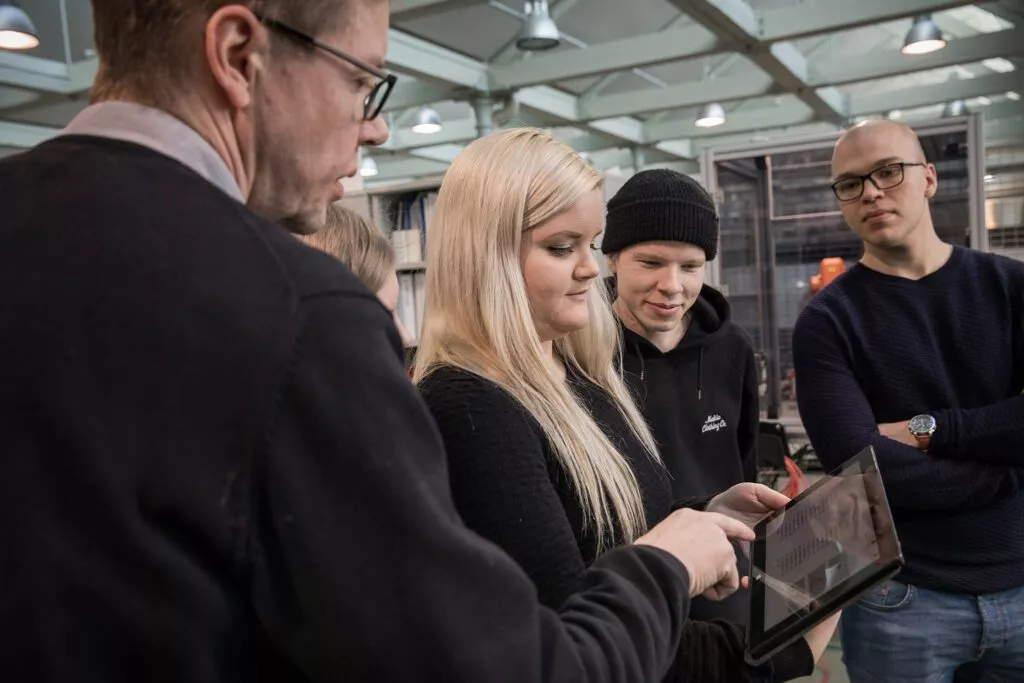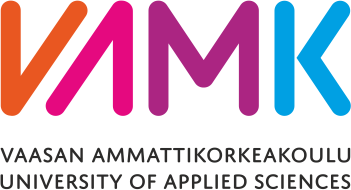
Technology’s Practical Training
The practical training in Degree Programmes of Technology comprises 30 credit points. 30 cp corresponds to 20 weeks of training. The work experience is acquired during the studies or during the period especially reserved for training in the degree programme.
1. General
A prerequisite for taking an engineering degree is a sufficient amount of work experience. The work experience is acquired during the studies or during the period especially reserved for training in the degree programme. If not enough training has not been acquired during the studies, more practical training can be acquired after the studies, but before the diploma is awarded. In general, students themselves are responsible for finding a training place.
2. Guided Training
Training is always guided and its purpose is to familiarise the student with practical work tasks that are important from the point of view of professional studies, and with applying knowledge and skills in practice.
Guided training includes the practical training instructions, a plan/agreement for the coming training made by the student and a practical training report. The assessment of testimonials is also a natural part of training guidance. The guidance at work is given by the employer.
3. Grouping
1. Basic training
Basic training refers to all work experience gained in the field of engineering.
The objective is to increase the student’s knowledge of working life and its regularities.
2. Professional Training
Professional training refers to work experience gained in the field of the degree programme.
The objective is to give the student a possibility to apply in practice the knowledge learnt in theory and to develop the preparedness to work independently. During the training the student gets familiar with a specific area of the specialisation alternatives of the degree programme. The training deepens the student’s knowledge, trains him/her for the professional tasks and complements the studies. It is recommended to choose a training place that advances the implementation of the student’s career plans.
4. Amount
The amount of practical training is 30 credit points, of which at least 20 credit points should be professional training.
Practical training is considered completed in engineering programmes if the student has at least the qualifications of a technician. Practical training gained prior to the studies does not generally qualify for credit points.
The correspondence of credit points and training weeks:
- 30 cp corresponds to 20 weeks of training
- 10 cp corresponds to 7 weeks of training
5. Quality
The training should be as many-sided as possible and consist of at least two different parts. The training should also be in a technical field.
After the first year of study, a maximum of 10 cp can be accepted as practical training. It is recommended to acquire part of the professional training at the final stages of the studies and that it includes supervisory, design, development or other similar tasks.
To improve international skills, it is recommended that part of the training is completed abroad. The students of English-medium degree programmes are expected to complete training or studies abroad at least worth 10 credit points.
Work periods that last at least four weeks are accepted as practical training. Practical training that has been completed as part-time, 10 credit points at maximum can be accepted.
The prerequisite for accepting the training is that the person responsible for training atwork place has at least the qualifications of a technician.
6. Tasks
Tasks suitable for training are e.g.
- work as a fitter or a vocational trainee in installation, maintenance or repair work or
- various technical tasks
- professional or assistance work on worksites
- supervisory, design, development tasks or other similar tasks at the final stages of the
- training
7. Training Plan/Agreement
A training plan has to be made before starting the training period using the enclosed form, and the form is presented to the training responsible teacher for approval.
8. Report
A report is written on every training period. The report is submitted to the training responsible teacher. A signed training plan/agreement must be submitted together with the report.
9. Testimonial
A prerequisite for accepting the practical training, in addition to the training report, is a testimonial from the employer. The testimonial should include information on the duration of the training and a fairly detailed description of tasks and duties.
10. Acceptance Procedure
The testimonials and the reports are submitted for acceptance to the training responsible teacher by mid-September. Having accepted the training, the teacher enters the credit points to the study system. The testimonial or training plan/agreement can be accepted up to half of the credit points of training period. The rest of the credit points come from approved training report.
Mechanical Engineering
Jobs suitable for practical training are e.g.
- basic metal industry, metal product industry
- machine industry, vehicle industry
- installation sites for machinery and steel structures
- plastics industry
- process industry
- electro-technical mechanical engineering industry
- precision industry
- textile industry, clothing industry
- food industry
- engineering offices
Electrical Engineering, Information Technology
Jobs suitable for practical training are e.g.
- companies manufacturing electrical products
- installation and service firms and maintenance shops in electrical engineering
- electricity works, electrical laboratories and test rooms
- industrial instrumentation departments and research laboratories
- companies in the field of electronics, IT, telecommunications and automation
- research institutes and laboratories
- telecommunications companies, radio and television companies
- software houses and telecommunication centres
- engineering offices
Construction Engineering and Environmental Technology
Jobs suitable for practical training are e.g.
- state institutions
- municipal institutions and organisations as well as
- private companies which have building, maintenance, research and design activities in the field of building engineering or environmental technology
- building material and building product industry
- industrial and publics building sites
- private house, row house or high rise building sites
- renovation sites on a larger scale
- architect offices
- engineering offices
If there is doubt about whether the intended work is suitable as an internship, an internship plan/agreement is prepared together with the employer. The internship plan/agreement must be submitted for approval to the supervising teacher before the internship period begins. The internship agreement can be made using the attached form template.
General
A practical training report is written of each training period. The report should include at least the items presented in these instructions.
Write in an essay-type paragraph of each item in your own words; do not write an itemised list. If the report is insufficient, the student will be invited to a personal feedback discussion. Depth, criticalness and many-sided views are part of a good report. However, you will have to able to defend you opinions and views.
A weekly analysis is personal and you only write it for yourself, so that you can use it as a basis for your report.
1. Collecting Information for the Report
An analysis is done weekly during the practical training, where the student analyses the happenings of the week. The weekly analyses are enclosed with the report. It is worthwhile to write also the report itself gradually every week; it is sometimes difficult to write afterwards and the important matters concerning self-learning may be forgotten.
The following items should be dealt with in the weekly analysis
- Description of the tasks, working methods
- What have you learnt during the week? (Self-development)
- What have been your strengths when performing your tasks?
- Where do you see a need for improvement and learning?
- Which things that you have learnt in theory have you encountered in practice?
- Are there questions left unanswered during the week to which you would like to have an answer later on, e.g. in teaching?
- Write down the positive experiences of the week
- Write down the negative experiences of the week
2. The Contents and Format of the Report
2.1. The Contents
Introduction
- Where and when was the training completed?
Description of the training place, include at least the following:
- The company’s year of establishment, location, number of staff and field of business
- The most important products and clientele
- Organisational chart and your position in it
- Training provided by the company, especially for your task
- Placement from the trainee’s point of view
Job description:
- Assess the suitability and quality of the job as training, taking into account your previous work experience and progress in studies
- How did the training period influence your opinions of the field and your career choice?
Self-evaluation on the whole training period
- How did you adapt to the company organisation, team, supervisors and co-workers? Did you feel job satisfaction?
- What kind of placement do you think would develop you most next time and would show upward tendency?
- In professional sense, what was most important in the training and what in areas did you develop most?
- What new did you learn about yourself (strengths, weaknesses)? In what areas would you like to improve yourself and your chances on labour market?
- What would you like to learn in the future during your studies or during your next training period?
2.2 The Format
The report is written in accordance withthe SFS 2487 standard. This report is written in that format.
3. Return of the Report
The training report with its enclosures (the training plan accepted by the training responsible teacher, weekly analyses and a copy of the testimonial) are submitted to the training responsible teacher after the practical training period by mid-September.

